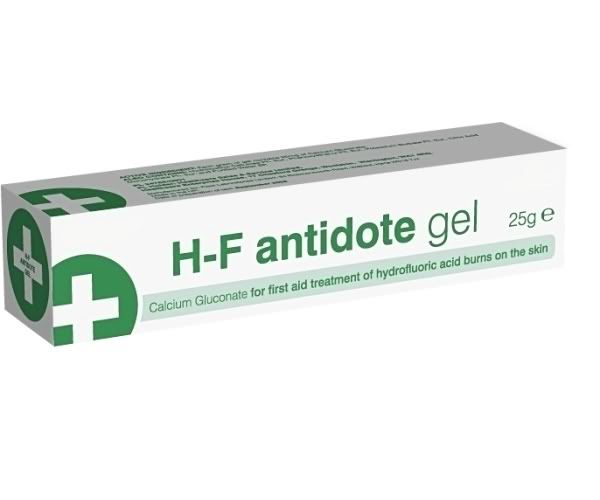Essential Hydrofluoric Acid Training
What do you consider to be essential knowledge for Hydrofluoric Acid response?
What about the difference between Firefighters versus HAZMAT teams versus Paramedics, given they all have different roles and possible exposures, etc?
Here's a bit of info on Hydrofluoric Acid- http://en.wikipedia.org/wiki/Hydrofluoric_acid
What about the difference between Firefighters versus HAZMAT teams versus Paramedics, given they all have different roles and possible exposures, etc?
Here's a bit of info on Hydrofluoric Acid- http://en.wikipedia.org/wiki/Hydrofluoric_acid
Tags:
Replies to This Discussion
-
Permalink Reply by Ben Waller on October 25, 2008 at 7:09pm
-
Hazmat Teams need to know the following for HF:
1) Don't get it on you
2) Any PPE exposed to HF must be thrown away - HF has such a high permeation rate that you can never again trust a suit, boots, etc. that have HF on them.
3) Decon should involve deluge amounts of water to dilute the HF as much as possible.
4) Decon runoff may still be highly corrosive.
5) The decon runoff may be neutralized with large quantities of unslaked lime.
Paramedics need to know:
1) Don't get it on you.
2) Use Calcium Gluconate get for skin exposures to patients or personnel. Use a stand-off applicator like tongue depressors so that you don't cross-contaminate yourself when applying the Calcium Gluconate gel.
3) For major HF burns, as soon as decon is complete, start an IV and apply a cardiac monitor. If there's any evidence of hyperkalemia (excessive potassium in the cardiovascular system) it will show up initially as tall, tight,sharply-peaked T-waves followed by a slower heart rate leading to a wide-complex sine-wave PEA. The treatment is IV Calcium Gluconate.
4) HF burns HURT. Patients report that the burns are excruciating. Strong consideration should be given to pain relief in the field. Opiates are an option. In hospital, nerve blocks, local anaesthetics, or additional opiates will make the patient LOVE you.
Firefighters need to know:
1) Recognize that HF is present. Pre-planyour area and know where it is. Jewelers and circuit board manufacturers are prime candidates for HF storage or use.
2) Don't get it on you.
3) Have deluge emergency decon present for anyone that does get it on them.
4) Specialized resources like Hazardous MaterialsToxicology paramedics and Hazmat Teams are needed for any HF exposure of more than minor spatter burns.
-
Permalink Reply by lutan1 on October 25, 2008 at 7:09pm
-
Here's an intersting link to a PDF called, "Priority Existing Chemical Assessment Reports, PEC No. 19, Hydrofluoric Acid" http://www.nicnas.gov.au/Publications/CAR/PEC/PEC19.asp
Obviously having only just come across it, a quick flick through I see that there are differing exposure standards throughout the world which surprises me- for some reason I thought they would have been pretty consistant.
For example in the USA and Australia, the TWA is 3ppm, however in Norway it's 0.8ppm
Also pages 147-157 outlines incidents that have occurred in Australia involving Hydrofluoric Acid.
-
Permalink Reply by Ben Waller on October 25, 2008 at 7:13pm
-
Is that for respiratory exposure?
-
Permalink Reply by lutan1 on October 25, 2008 at 7:18pm
-
Thanks Ben for another well thought out reply.
Scary shit!
A quick look on YouTube and I came across this video- Hydrofluoric Acid eating through glass. Note the lack of a fume cupboard and the use of short sleeves...
-
Permalink Reply by lutan1 on October 25, 2008 at 7:20pm
-
I would assume so- aren't all Exposure Standards based on respiratory exposure and measured within the breathing zone? That was my understanding.
-
Permalink Reply by Ben Waller on October 25, 2008 at 7:28pm
-
More links to HF uses, problems, and treatment.
http://www.mnpoison.org/index.asp?pageID=151
http://www.powerlabs.org/chemlabs/hydrofluo.htm
http://www.chm.bris.ac.uk/safety/hf.htm
http://www.scorecard.org/chemical-profiles/uses.tcl?edf_substance_i...
http://www.udel.edu/OHS/hfsop.html
http://www.emedicine.com/emerg/topic804.htm
-
Permalink Reply by Ben Waller on October 26, 2008 at 8:37pm
-
Some of them are for dermal absorption - there are chemicals that are either solid and not inhalation hazards or that are very viscous liquids that don't offgass at normal atmospheric temperature and pressure. Some of those have exposure standards based on absorption.
-
Permalink Reply by lutan1 on October 29, 2008 at 2:52am
-
I wasn't aware of that- hadn't come across it...
-
Permalink Reply by Jeff Betz on October 31, 2008 at 6:55pm
-
We have a factory here in my city that makes this stuff, lots of it. We have a couple HF kits on rigs, and we review each year. That said, it still scares the crap outta me and I'm glad we've only had one minor call with the stuff...so far.
-
Permalink Reply by Bill Muehsam on October 31, 2008 at 7:19pm
-
Other than Florine being a calcium (Bones!!!!) seeker and will eat you away from the inside out.......This is BAD stuff folks. Any of the Halogens (Chlorine, Florine, Bromine, etc) are "Bad Actors" (extremely corrosive and inhalation hazards). Use extreme caution when dealing with any "product" containing Florine, or any of the Halogen Family.
-
Permalink Reply by Mike Schlags (Captain Busy) Retd on November 1, 2008 at 1:37am
-

Specialty Websites
Find Members Fast
Firefighting Videos
© 2025 Created by Firefighter Nation WebChief.
Powered by
![]()
Badges | Contact Firefighter Nation | Privacy Policy | Terms of Service